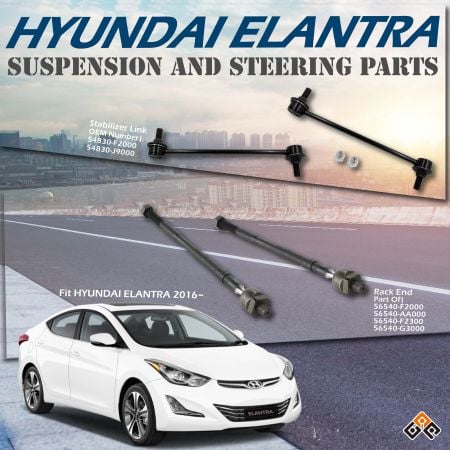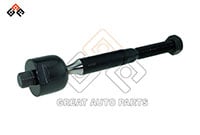Signs Your Vehicle Needs a Suspension Alignment
Ever felt your car pulling to one side or noticed uneven tire wear? These are often signs of suspension misalignment, an issue that can compromise your safety and cost you money in the long run. Suspension alignment ensures your vehicle handles properly, reduces wear on tires, and maximizes fuel efficiency. In this guide, we’ll cover everything you need to know about suspension alignment, from its importance to prevention tips and when to seek professional help.
What Is Suspension Alignment, and How Does It Impact Your Vehicle’s Safety and Performance
Suspension alignment is the process of adjusting the angles of your vehicle’s suspension system to ensure proper tire contact with the road. It’s not just about your wheels looking straight—it’s about keeping your car stable, responsive, and safe.
Proper alignment improves handling, reduces tire wear, and even boosts fuel efficiency. Misalignment, on the other hand, leads to uneven tire wear, poor steering, and increased stress on your suspension system. Think of alignment as the foundation of your car’s performance, if it’s off, everything else is affected.

What Causes Suspension Misalignment, and How Can You Prevent It from Happening
Several factors can throw your suspension out of alignment. Here are the most common causes and how to avoid them:
| Cause | Description | Prevention Tip |
| Potholes and Curbs | Hard impacts disrupt alignment. | Slow down for potholes and avoid curbs whenever possible. |
| Worn Suspension Parts | Components like bushings and control arms wear down. | Schedule regular inspections to catch wear early. |
| Accidents | Collisions, even minor, can shift suspension. | Check alignment after any accident. |
By addressing these factors, you can extend the lifespan of your suspension system and keep your vehicle performing optimally.
Signs Your Vehicle Needs a Suspension Alignment
How do you know if your suspension is out of alignment? Watch for these warning signs:
| Sign | Description | Reason | Action |
Uneven Tire Wear | One side of the tire is more worn, or patterns like feathering or camber wear are visible. | Misaligned camber or toe angles cause uneven force distribution. | Regularly check tires; if uneven wear is noticed, schedule an alignment immediately. |
Pulling to One Side | The car drifts left or right on a flat road, even when the steering wheel is straight. | Misaligned suspension angles or uneven tire pressure. | Adjust tire pressure; if pulling persists, have the alignment checked to avoid loss of control. |
Off-Center Steering Wheel | Steering wheel is angled when driving straight. | Misalignment in toe or thrust angles shifts the wheel position. | Address promptly, as it often indicates deeper alignment problems. |
Vibrations | Steering wheel shakes, especially at higher speeds or during braking. | Misalignment causes uneven tire-road contact or indicates other issues. | Inspect suspension; vibrations might also indicate unbalanced wheels or worn components. |
Reduced Handling | Car feels unstable during turns or at high speeds. | Misaligned angles disrupt vehicle balance, reducing control. | Avoid driving in this condition; schedule an alignment and inspect suspension for damage. |
Ignoring these signs can lead to costly repairs and unsafe driving conditions. If you notice any of these, it’s time to schedule an alignment.
What Happens if You Skip Suspension Alignment After Repairs
Skipping alignment after suspension repairs can lead to serious problems:
| Problem | Impact |
| Uneven Tire Wear | Tires wear out faster, increasing replacement costs. |
| Reduced Fuel Efficiency | Misaligned wheels cause tire drag, reducing gas mileage by up to 10%. |
| Poor Handling | Steering becomes less responsive, increasing safety risks. |
| Stress on Suspension | Components wear out prematurely, leading to expensive repairs. |
| Dangerous Braking | Misalignment affects how force is distributed during braking. |
Skipping alignment is a risk you can’t afford, especially after replacing suspension parts.
Why Your Tires and Fuel Efficiency Depend on Proper Alignment
Misalignment doesn’t just wear out your tires—it hits your wallet, too. Tire drag caused by misalignment makes your engine work harder, reducing fuel efficiency. Imagine spending 10% more on gas every time you fill up—it adds up quickly.Proper alignment ensures your tires roll smoothly, saving you money on fuel and extending the life of your tires. It’s a small investment that pays off in the long run.
When and How Often Should You Schedule a Professional Suspension Alignment
Alignment isn’t just a one-time fix—it’s routine maintenance. Here’s when to schedule:
- After hitting a pothole or curb.
- Following suspension repairs.
- If you notice any alignment warning signs like pulling or vibrations.
- Every 5,000 to 10,000 miles as part of regular vehicle maintenance.
Regular alignments ensure your car remains safe, efficient, and comfortable to drive.

Tools and Techniques Mechanics Use for Perfect Alignment
Professional alignment requires specialized tools and precision techniques:
- Alignment Machines:
Clamp devices attached to wheels provide computerized measurements for exact adjustments. - Hoists:
Lifts give mechanics access to suspension components for accurate calibration. - Manufacturer Specifications:
Mechanics adjust angles like camber, toe, and caster to meet factory guidelines.
DIY Suspension Alignment vs. Hiring a Professional: Which Option Is Right for You
| Aspect | DIY Alignment | Professional Alignment |
| Tools Needed | Basic tools; limited accuracy | Specialized alignment machines |
| Cost | Low upfront cost | Higher initial cost; lasting results |
| Precision | Lower; relies on trial and error | High precision; meets specifications |
| Recommended For | Simple adjustments | Comprehensive realignments |




